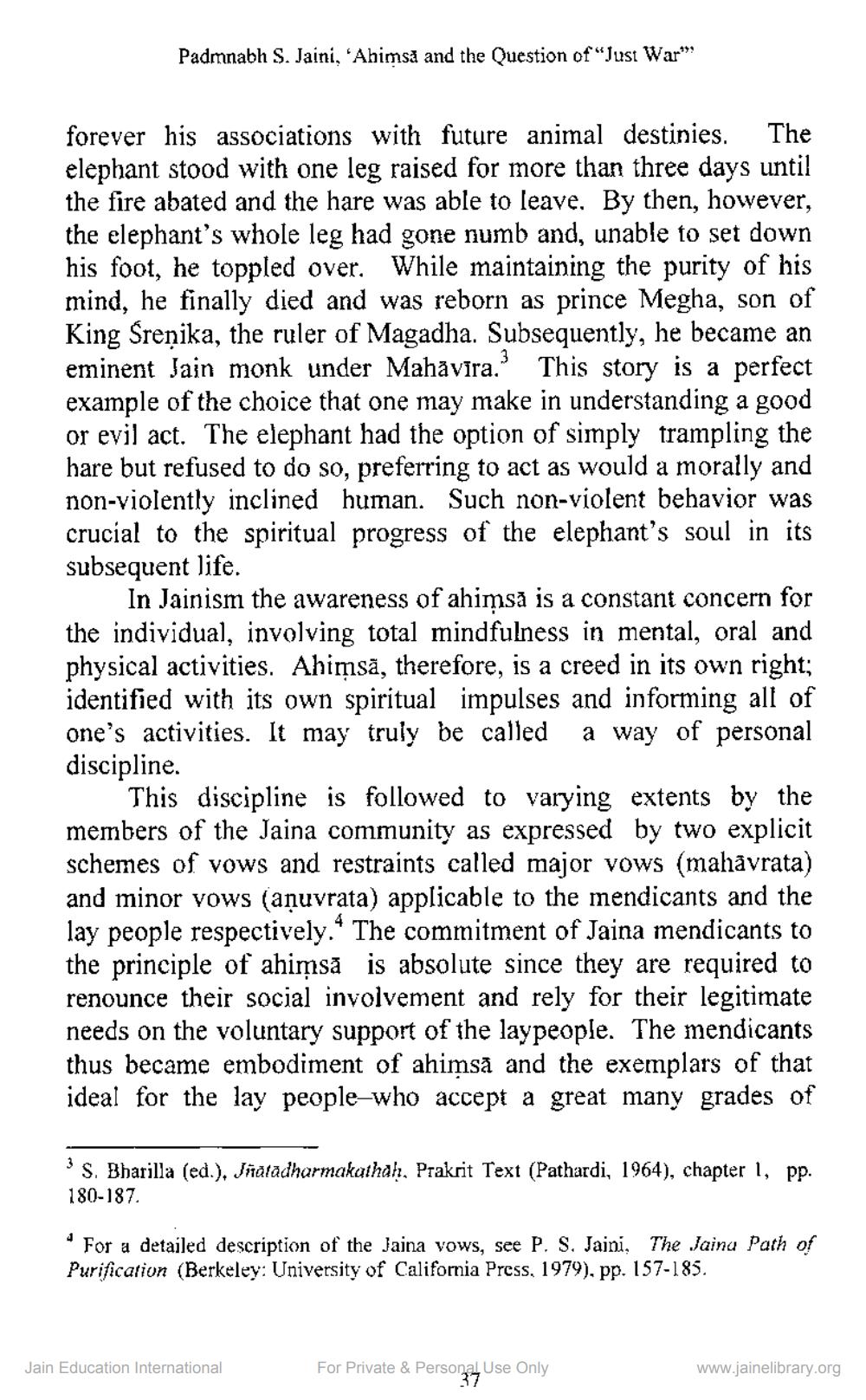Book Title: Ahimsa and Question of Just War Author(s): Padmanabh S Jaini Publisher: Z_Lessons_of_Ahimsa_and_Anekanta_for_Contemporary_Life_014006.pdf View full book textPage 3
________________ Padmanabh S. Jaini, 'Ahimsa and the Question of "Just War"" forever his associations with future animal destinies. The elephant stood with one leg raised for more than three days until the fire abated and the hare was able to leave. By then, however, the elephant's whole leg had gone numb and, unable to set down his foot, he toppled over. While maintaining the purity of his mind, he finally died and was reborn as prince Megha, son of King Sreņika, the ruler of Magadha. Subsequently, he became an eminent Jain monk under Mahavira. This story is a perfect example of the choice that one may make in understanding a good or evil act. The elephant had the option of simply trampling the hare but refused to do so, preferring to act as would a morally and non-violently inclined human. Such non-violent behavior was crucial to the spiritual progress of the elephant's soul in its subsequent life. In Jainism the awareness of ahimsa is a constant concern for the individual, involving total mindfulness in mental, oral and physical activities. Ahimsa, therefore, is a creed in its own right; identified with its own spiritual impulses and informing all of one's activities. It may truly be called a way of personal discipline. 4 This discipline is followed to varying extents by the members of the Jaina community as expressed by two explicit schemes of vows and restraints called major vows (mahāvrata) and minor vows (aṇuvrata) applicable to the mendicants and the lay people respectively. The commitment of Jaina mendicants to the principle of ahimsa is absolute since they are required to renounce their social involvement and rely for their legitimate needs on the voluntary support of the laypeople. The mendicants thus became embodiment of ahimsa and the exemplars of that ideal for the lay people who accept a great many grades of 3 S. Bharilla (ed.), Jñātādharmakathaḥ, Prakrit Text (Pathardi, 1964), chapter 1, pp. 180-187. 4 For a detailed description of the Jaina vows, see P. S. Jaini, The Jaina Path of Purification (Berkeley: University of California Press, 1979), pp. 157-185. Jain Education International For Private & Personal Use Only 37 www.jainelibrary.orgPage Navigation
1 2 3 4 5 6 7 8 9 10 11
